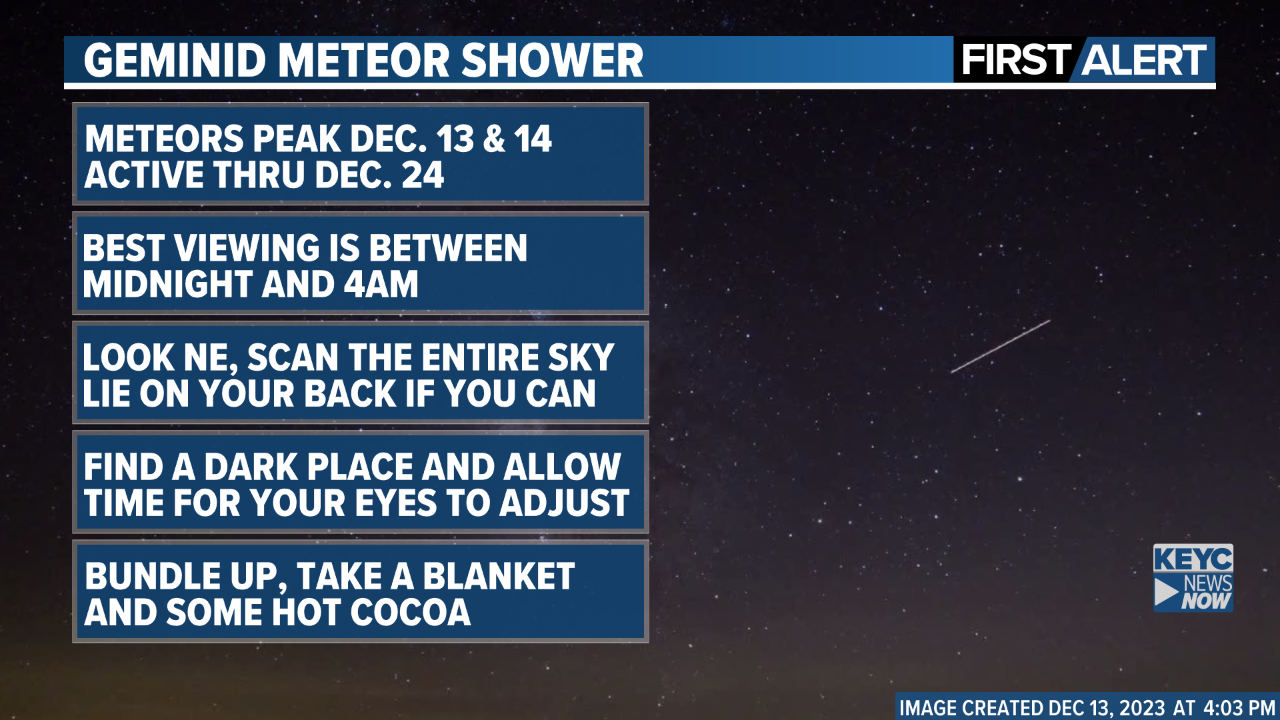Geminid meteor shower peaks this week
The Geminid meteor shower, one of the most spectacular annual meteor showers, is going to be at its peak over the next several days, and Meteorologist Shawn Cable says that weather conditions will be perfect for viewing. Here are some tips for a great experience:
Find a Dark Location: Light pollution greatly diminishes the visibility of meteors. Choose a spot far away from city lights, ideally in a rural or wilderness area. The darker the sky, the more meteors you’ll be able to see.
Know When to Watch: The Geminid meteor shower typically peaks around mid-December. This year, the peak will be December 13 and 14; however, Geminids will be active through December 24. The shower is usually most active after midnight and before about 4am.
Look Toward the Northeast: Geminids appear to radiate from a point near the bright star Castor in the constellation Gemini, which is located in the northeastern part of the sky (here in the Northern Hemisphere) during the time of the shower’s peak in December. If you can, it’s best to lie down and look straight up, allowing your peripheral vision to catch meteors streaking across the sky.
Allow Your Eyes to Adjust to the Dark: It takes about 30 minutes for your eyes to fully adapt to the darkness. During this time, avoid looking at your phone or any other light source, as this can reduce your night vision. If you must use your phone, make the screen as dim as you can.
Be Patient and Dress Warmly: Meteor watching can require a lot of patience. Not every minute will have a meteor streaking across the sky, and it can be a cold activity, especially in December. Dress warmly, bring a blanket or a comfortable chair, and perhaps some hot beverages to keep you cozy while you watch.
Remember, meteor showers are natural events, and their visibility can be affected by weather and other environmental factors. Check the weather forecast and be prepared for changes.

